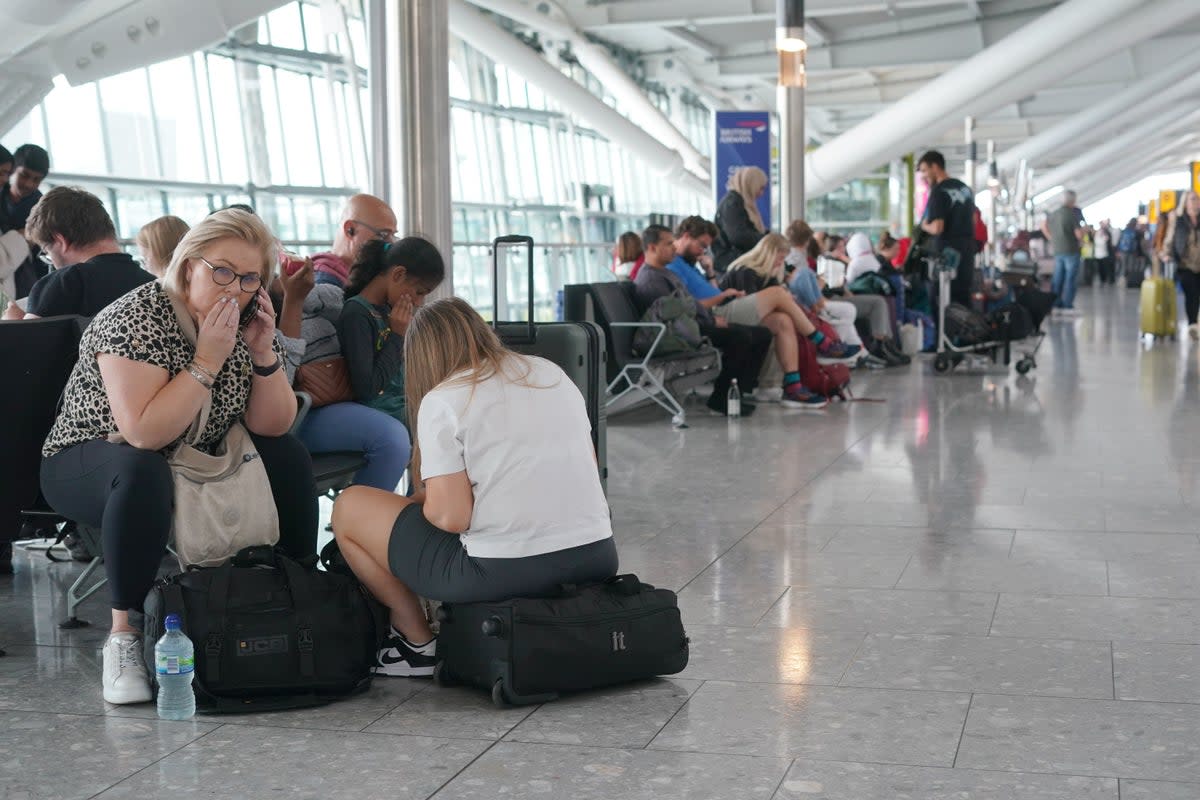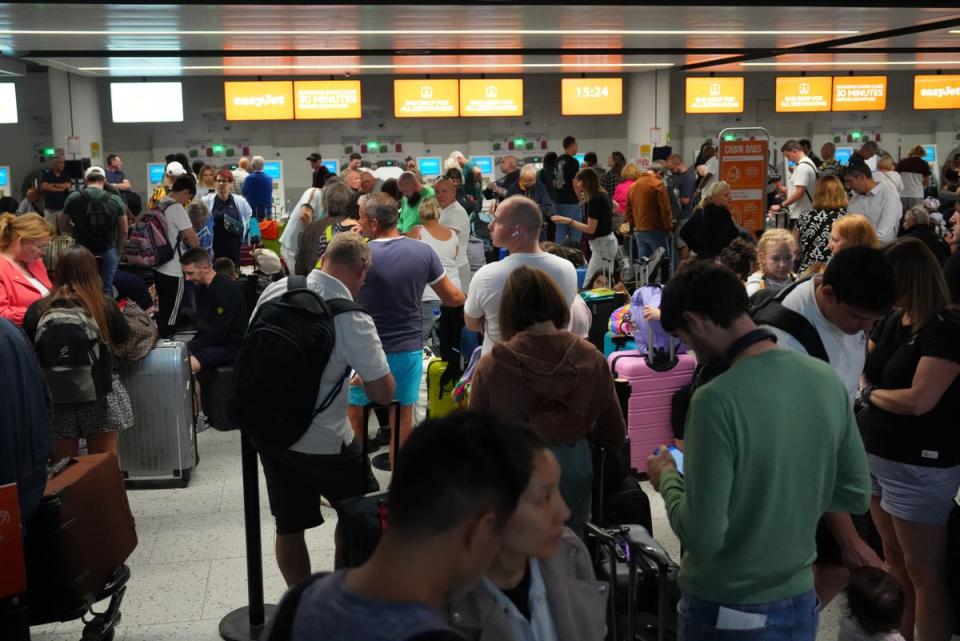The collapse of air-traffic control that caused major flight chaos and how it unfolded

At 8.32am on 28 August 2023, French Bee flight BF731 was flying over the ocean between Artic Canada and the southern tip of Greenland on a routine journey from Los Angeles to Paris Orly airport.
The flight had taken them over the western US and eastern Canada. Ahead, according to the flight plan, lay Northern Ireland, Wales and England before crossing the Channel and making landfall above the pretty French resort of Deauville.
As was normal, a flight plan had been filed to Eurocontrol – the pan-European air-traffic control service based in Brussels. This online document – as all flight plans do – resembled a coded message. It began “ORCKA5 LAS Q70 BLIPP Q842 WINEN MLF J107 OCS CZI DIK DVL …”
The planned route is largely given as a list of “waypoints”: specific locations on the surface of the earth. Typically they have five-letter codes; BLIPP is northwest of Las Vegas. Flight plans also include navigational beacons, which have only three letters: DVL is the code for Devil’s Lake in North Dakota.
Coincidentally, it is also the code for the beacon located at Deauville in France.
The flight plan was in accordance with long-established standards. The pilots at the controls of the Airbus A350 jet had no reason to think there was anything unusual about the 5,867-mile journey from California to Paris.
But the computer system at Nats, the air-traffic control company responsible for planes flying through UK airspace, took a different view.
At 8.32am Eurocontrol routinely shared the plan with the relevant national air-navigation services so that they would be expecting the aircraft.
When the flight plan, containing duplicate codes for different beacons, reached the Nats HQ in Swanwick, Hampshire, it triggered a chain reaction that led to over 700,000 passengers facing disruption at one of the busiest times of the year.
The Civil Aviation Authority (CAA) established an independent review, which has now published its interim report. We now know more about how events unfolded, minute by minute.
All times British Summer Time.
Bank holiday Monday, 28 August 2023 4.59am French Bee flight BF731 departs from Los Angeles, destination Paris Orly. The airline, the pilots and the flight plan bear no responsibility for what happened next.
8.32am Flight plan for BF731 received by Nats from Eurocontrol. It referred to two beacons, both coded DVL. The UK air-traffic control system “identified a flight whose exit point from UK airspace, referring back to the original flight plan, is considerably earlier than its entry point.”
“Recognising this as being not credible, a critical exception error was generated.”

The system placed itself into “maintenance mode” – a safety measure “to prevent the transfer of apparently corrupt flight data to the air traffic controllers”.
Twenty seconds later, the report says: “The same flight plan details were presented to the secondary system which went through the same process as the first with the same result: a second critical exception error and disconnection.”
“Automatic processing of flight plans ceases. Manual input of flight plan data begins.”
8.59am A “Level 1 engineer” tries to reboot the system.
9.06am “First contact with Level 2 engineer on standby remotely.” The engineer, as was standard practice, was at home.
9.23am Nats’ duty engineering service manager tells teams at the area control centres (ACCs) at the Hampshire HQ at Swanwick, as well as those at Prestwick and the Oceanic ACC. “Advises to start preparation for operational impact in the event of continuing outage.”
9.35am Over an hour after the main and standby systems both shut down, Nats’ technical services director, operations director and chief executive were notified.
10.04am The first UK airline to be aware that anything untoward is happening is Tui. The group’s operations centre in Hanover warns its British counterpart of “mass delays across the UK”.
10.08am Nats controllers at Luton tell airport managers about a “technical failure”.
10.12am One hour and 40 minutes after the original failure, it is agree that the Level 2 engineer will “attend on site”.
10.14am Gatwick airport is “notified of the failure by Gatwick control tower”.
10:43am Eurocontrol in Brussels advises “regulations would be required for UK airspace.”

10:45am Virgin Atlantic realises “there was an issue when slot delays were noticed”. Five minutes later, the airline was told by Heathrow airport “of a system failure”.
At the same time controllers at Liverpool were told of a problem by Nats colleagues at Manchester airport. Regional and City Airports, which runs Bournemouth, Exeter and Norwich airports “found out information from BBC News”.
11am Britain’s biggest budget airline, easyJet, gets a call from Eurocontrol saying flight movements in the UK would be limited to 60 per hour – rather than the usual 800. This represents a 92.5 per cent reduction in the amount of flying on one of the busiest days of the decade.
11.45am Over three hours after the systems collapse, the first “ATICCC” conference call takes place between Nats and four key players: British Airways, Manchester Airports Group, Ryanair and Virgin Atlantic.
11.47am Eighty-five minutes after the Level 2 engineer agreed to “attend on site”, they arrive at Nats’ HQ at Swanwick. Six minutes later, a more senior Level 3 engineer is connected at home. The Level 2 engineer spends 35 minutes leading “full hardware reboots”.
12.30pm According to Tui, Gatwick airport requests airlines to cancel four out of five flights and cease checking in new passengers.
12.45pm According to British Airways. Heathrow airport asks all airlines “to cancel UK, Ireland and European flights until 6pm”. One hour later, BA is told the issue had still not been resolved.
2.02pm Europe’s biggest budget airline, Ryanair, gets a five-minute call from Nats CEO Martin Rolfe. He says a solution may have been identified but that there is no timeframe for implementation or for traffic flow regulations to be removed.
Nine minutes later a third update posted by Eurocontrol, stating that there is no current solution to the problem.
2.27pm “Auto processing of flight plans recommences – technical system restored.” By now, thousands of flights and hundreds of thousands of passengers are out of position.
2.43pm Virgin Atlantic is told widebody flights will be prioritised.
2.51pm French Bee flight BF731 lands normally at Paris Orly, a few minutes late.
4pm Mark Harper, the transport secretary, is briefed by Nats.
7.01pm Nats says: “Major incident investigation to be initiated.”
11.59pm By the end of the day, 1,600 flights have been cancelled, affecting 240,000 passengers. Many more have been delayed.
Tuesday 29 August, 4pm As widespread cancellations continue to and from all major UK airports, easyJet reports: “First formal communication from Nats to the chief operating officer and director of Airport Ops and Nav.”
British Airways tells business-class passengers flying in Europe than the “empty middle seat” policy has been suspended in a bid to get travellers where they need to be.
Wednesday 30 August, 8.30am Tui reports: “Programme returned to normal but there are some knock-on crew issues.”
Thursday 31 August Jet2 reports: “Overnight delays continue due to fleet shortage.”
Monday 4 September Bristol airport reports: “Last impact of delays and cancellations due to displaced crew and aircraft. Majority of vehicles had been collected from car park.”
For more travel news, views and advice from Simon, download his daily Independent Travel podcast.


